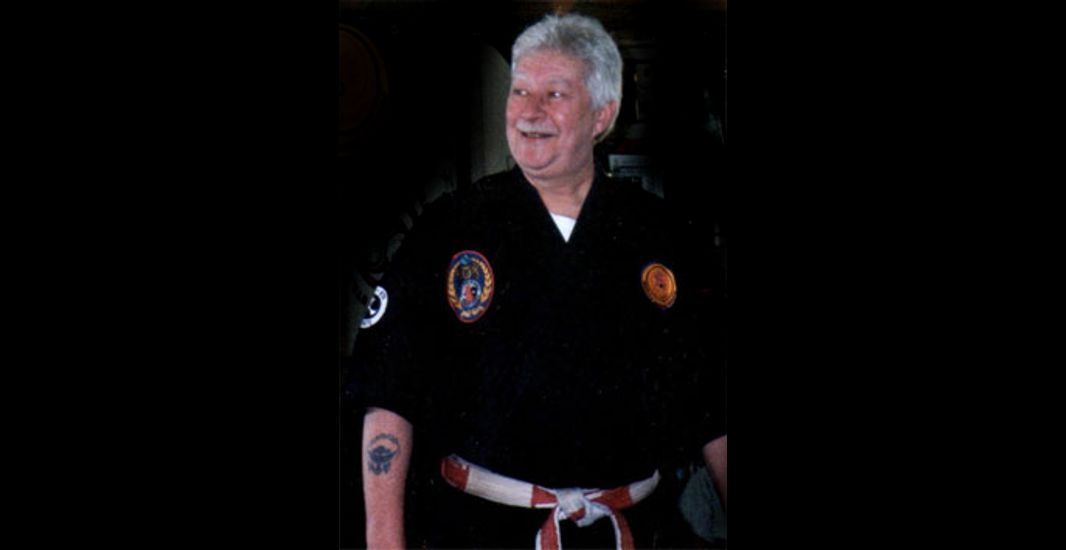Aloha,
Hanshi Sid Campbell was a great warrior, a teaching Sensei, a talented artist, (all his prints are in the museum}, a weapons kobudo expert, a inspiring writer and historian of life and martial arts history.
He was a road warrior, Have Black Belt will Travel, a good friend who was always there even at 2:00 a., 70’s stuff, a Samurai, a mentor, a superb producer and inventor, a technique of stop maim, disable or !@#$% in sparring, and most of all he was a brother in true Karate spirit.
Hanshi Campbell will have a special place in Karate heaven and, as he knows, when I leave this earth I will be his uki and we will conquer another journey together.
Ous,
Gary Lee
Okinawan Shorin-Ryu
Uki
Sid Campbell, An American Sport Karate Pioneer, discusses the Sport Martial Arts Museum
Aloha and welcome,
The Sport Martial Arts Museum Organization under the guidance of founder Gary Lee is a major step forward in preserving the past, unifying the present and strengthening the future of the sporting aspects of our art. It is also the official home of the history, traditions and accomplishments of great martial artists that pioneered the way in bringing these exciting sport-oriented martial traditions to the United States and spreading it throughout the western world.
What we see today in the vast expanse where the martial arts have entrenched itself in American’s culture and social fabric is a plethora of positive human qualities that was spawned by the martial arts sport movement. Through venues like karate tournaments, major action-adventure motion picture productions, professionally sanctioned televised events, martial arts schools, law enforcement agency defense tactics curriculums, Internet connectivity, seminars, magazine publishers, equipment supply companies, instructional books, educational DVDs, video arcade games, etc. — can all, in one way or another, trace its roots back to the sport martial arts competitors of the early 1960s when the Asian martial traditions were being introduced to the world. More specifically, it was the martial arts competitors, tournament producers and the fans of that bygone era that we today call the “golden age” of karate in America is of where this expansive and phenomenal growth evolved from in the first place.
Being fortunate enough to be one of the first Americans to teach Okinawan karate in the United States and western world during karate’s “golden age” of the 60s, I was blessed to be a part this cultural evolution. To be a small part of this dedicated cadre of this movement which now touts tens of millions of practitioners on a global scale still humbles me beyond the scope of words alone.
In my wildest dreams I could not have imagined that the martial disciplines like karate, kung-fu (gung-fu), judo, jujitsu, ninjitsu, tae kwon do, kempo, escrima, kendo, aikido, iaido, kali, capoeira, savate, sambo, kobudo, pankration, bugei, wushu, mixed martial arts and eclectic martial arts would have reached that level of popularity in the past forty some odd years. And, to see the art I love so much endure these sometimes tumultuous times and undergo so many innovative changes along the way while still retaining the quintessential essence of its original purpose and traditional values is truly astounding. Perhaps what is just incredible about this form of physical expression that emphasizes moral and ethical values is that it has helped develop some of the finest human beings that these past four decades of growth can produce. I must attribute this, at least in part, to the exceptional martial arts educators that have dedicated their life and energy to elevating the spirit of the warrior and teaching the arts that has been a way of life for a select few for the past fifteen hundred years.
The Sport Martial Arts Museum was created and founded on the premise that the efforts, dedication, perseverance and enthusiasm of these early practitioners would be preserved and passed forth for posterity sake. A noble cause in deed when we stop to think that many future generations will know who was responsible for this phenomenal growth and worldwide popularity from a sport perspective. Again, I must reiterate that this worthy endeavor to document, archive and house the sporting aspects of these myriad of martial disciplines that were, in part, responsible for this global popularity of the martial arts is the righteous and just action to take so that future generations will be able to share in the excitement, enthusiasm and camaraderie that was unwittingly nurtured in karate’s “golden age” of karate in America. And, as with any endeavor that attracts the interest of millions of avid devotees, preserving the past, unifying the present and strengthening the future needs a strong foundation to insure existence. I believe Gary Lee has set the cornerstone in place through his unceasing efforts and true love for the martial disciplines to guide this endeavor into the future. His insightful perception will undoubtedly insure that the sports aspects of the martial arts will be preserved and passed forward for many, many generations to come. For that, we will all be deeply indebted.
As you visit the Five House you will step back in time to when America and the western world was embracing the cultural traditions of Asia and forming an international bond that is stronger today because of his many years of hard work. Essentially Gary Lee has captured time in a bottle so that others can share these moments and drink from that same fountain of knowledge that America’s karate pioneers enjoyed from its introduction in 1945 in Phoenix, Arizona.
With great respect and Aloha,
Malama pono,
Sid Ka’imi Campbell
10th dan, hanshi, kaicho
Founder, the World Okinawan Shorin-ryu Karate-do and Kobudo Association (WOSKKA)
Founding Member, WorldBlackBelt.com
Karate Grandmaster, Artist, Author, Actor, Tournament Producer





